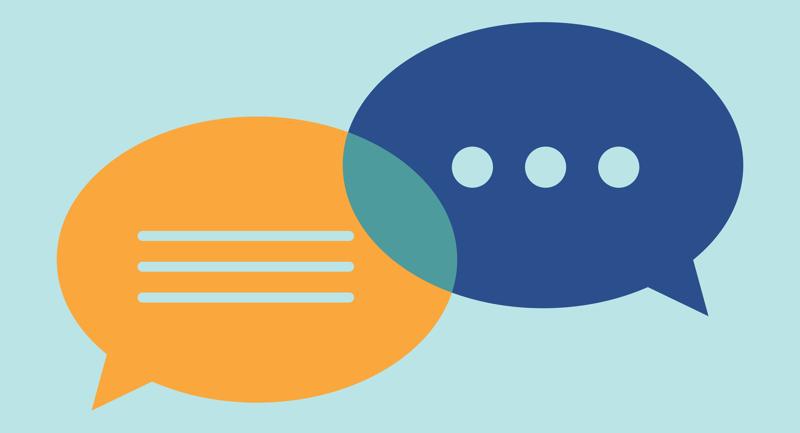In today’s world, with its rich and overwhelming amount of accessible information, bewildering career options, uncertainty, and change, five skill areas stand out as important for lifelong learning – being able to:
- Ask questions, formulate problems and challenges
- Search for and process information
- Think deeply and flexible
- Draw conclusions, apply to learn
- Communicate effectively.
It is the premise of this author that competency in all five skill areas, along with a fundamental knowledge base and knowledge of one’s own skills, talents, and interests, will significantly increase the probability that a student will be successful in college, career, citizenship, and the ability to adapt to change.
In other blog posts, I have indicated that certain beliefs and principles about teaching and learning support and enhance the development of these skills, and that the project-based learning model is naturally suited to help and support the development of all five skill areas. Other general strategies, such as Problem Based Learning and Creative Problem Solving, are also helpful in developing these skills.
In this blog post, I want to suggest eight types strategies that I believe are extremely useful for developing these skills. They also have the advantage of engaging students in the learning process.
Activators and Summarizers
Activators and summarizers are what we do immediately before and after a formal learning experience. Activators are designed “to engage students’ thinking before instruction”. They focus students on a goal, problem, challenge or essential question, surface student misconceptions, help students to feel some ownership in what they are learning, and enable teachers to gather data from students and adapt lessons and units to their prior knowledge. Summarizers are designed “to support integration and retention of new learning.” They help students to draw conclusions and summarize for themselves what was important, what they have learned, how it is important, and/or how it fits with what they already know.
Multiple types of activities can be used for both activators and summarizers, such as words that come to mind, human treasure hunt, interviews, learning logs, ticket out the door, and “the most important thing about…”. A “question-categorization brainstorm” activator also helps students build their question development skills and enables teachers to use student-developed questions to stimulate inquiry.
The above quotes and information (except for the question brainstorm) come from two books that overview and suggest strategies for both activators and summarizes:
Jon Saphier and Mary Ann Haley, Activators, and Jon Saphier and Mary Ann Haley, Summarizers. Acton, MA: Research for Better Teaching, 1993. Both of these books can be purchased from the Research for Teaching website or through Amazon.
An Internet search using the terms “activators” and “summarizers” suggests additional resources.
Information Literacy
Information literacy is “the ability to identify what information is needed, understand how the information is organized, identify the best sources of information for a given need, locate those sources, evaluate the sources critically, and share that information. It is the knowledge of commonly used research techniques.”[1] Although the term “information literacy” is most often used by librarians, the skills associated with it are critical for living in today’s information rich world. Information literacy activities help students to identify a topic for research, formulate questions and problems, search for and find information, evaluate, organize, analyze and synthesize information sources, and share results.
A search of information literacy websites highlight a number of web resources that can be used to help implement information literacy strategies, such as http://www.noodletools.com/debbie/literacies/; and http://www.webs.uidaho.edu/info_literacy/
Reading for Understanding
Once a child learns basic reading skills, how can he or she be helped to build comprehension and understanding. In this respect, every teacher is a teacher of reading. Kelly Gallagher gives a good description of Reading for Understanding:
“…WE CAN ASSIGN READING IN OUR CLASSROOMS, GIVE STUDENTS SHALLOW READING ASSIGNMENTS, AND HAVE STUDENTS PASS THEM. ON THE SURFACE, EVERYTHING LOOKS FINE: THE STUDENTS READ THE TEXT AND ARE ABLE TO ANSWER THE QUESTIONS. BUT IN REALITY DO THEY REALLY UNDERSTAND WHAT THEY HAVE READ? THEY CAN ANSWER SURFACE LEVEL QUESTIONS, BUT ONCE YOU ASK THEM TO EVALUATE, TO ANALYZE, TO SYNTHESIZE, THEY CAN’T DO IT. UNFORTUNATELY, I THINK A LOT OF…[THIS KIND OF SURFACE LEVEL]…READING IS GOING ON IN OUR SCHOOLS.”[2]
Reading for Understanding strategies help students go below the surface and find the deeper meaning behind what is being read. They have been developed to improve reading comprehension and the understanding of what is being read for all students in all subject areas. They include Before-During-After reading strategies, SQ3R strategies (if you don’t know this, look it up), first and second draft reading, interpretive discussions of text, reflective logs, and many other similar strategies.
A number of resources can be helpful for learning reading for understanding strategies, including:
Ruth Schoelbach, Cynthia Greenleaf, and others. Reading for Understanding. San Francisco, CA: Jossey-Bass, 1999
Kelly Gallagher. Deeper Reading. Portland, ME: Stenhouse Publishers, 2004.
The ASCD series of books on Reading in the Content Areas, especially Sue Beers and Lou Howell, Reading Strategies in the Content Areas. Alexandria, VA; An ASCD Action Tool, 2003.
Visual Learning Tools
Visual learning tools, also called graphic organizers, “assist learners…[in how to visually]…organize and find patterns among the overwhelming amount of information available today, as well as to make sense out of it and evaluate it”. [3] Another definition states that visual learning tools “help students collect information, make interpretations, solve problems, devise plans, and become aware of how they think.”[4] Multiple types of visual tools have been developed – mind maps, webs, decision trees, analysis charts, before and after reading charts, story maps, and many more.
These two books provide extensive information about visual tools and graphic organizers:
David Hylerle. Visual Tools for Constructing Knowledge. Alexandria, VA:Association for Supervision and Curriculum Development (ASCD), 1996;
Phyllis Green, editor. Graphic Organizer Collection. San Antonio, TX: Novel Units, 1999.
Other resources include software tools such as Inspiration, and “graphic organizers” searches provide a number of sources of information for finding and using visual tools.
“Deep and Flexible Thinking”
Thinking Deeply and Flexibly goes beyond memorization and low level inference making, and involves numerous habits and strategies, among them open-mindedness to new thoughts and ideas, explanation, classifying, comparing and contrasting, argumentation and debate, interpretation, problem solving, creativity, decision making, planning, and the use of logic and reasoning. Strategies range from the types of questions asked of students to strategies that promote specific types of thinking, such as interpretive discussions. In general, teachers should be familiar with a broad array of thinking strategies that promote different types of thinking, and how to employ them in the classroom with their students. Many resources are available for helping teachers learn to teach thinking. Among what I consider the best, collected over the years, are the following:
Louis Raths, Selma Wasserman, et. al. Teaching for Thinking, New Edition. New York: Teacher’s College Press, 1986 (A classic book about how to teach for thinking).
Arthur Costa, editor. Developing Minds: A Resource Book for Teaching Thinking, Third Edition. Alexandria, VA; ASCD, 2001 (another classic).
An Internet search using the words “teaching for thinking” yields many other valuable resources. Socratic discussion principles for classroom use can be found through Shared Inquiry discussion procedures at the Great Books Foundation, and the Touchstones Discussion Project.
Interactive Notebooks
With interactive notebooks, students are taught how to record, collect, and organize information in traditional formats from a teacher, text, or additional resources, and also are given creative, deep thinking assignments that help them to see connections, dig more deeply into learning, do analyses, synthesize data in interesting ways, and become independent, creative thinkers and writers. This approach is a terrific way for students to organize a notebook so that they collect, organize, synthesize, explore, and apply information in meaningful ways.
Practically, many teachers have students organize their interactive notebooks by using either the left or right side of the page for recording and collecting information in traditional ways, and the opposite side of the page for creative activities. Some teachers have students keep one section of a notebook for notes and another for creative, higher order thinking activities.
For more information, search “interactive notebook” on the web, and go to:
Writing Process/Writer’s Workshop
Writing Process and Writer’s Workshop are two ways to significantly increase skills in communicating through all types of writing, and at the same time use writing to enhance the development of the five skill areas. Writing process encourages students to improve writing gradually, over time, like professional writers do, rather than writing all at once and just once. The writing process consists of five stages — pre-writing activities, initial writing, revising, editing, and “publishing” (sharing writing with others). The writing process encourages students to ask good questions and formulate problems in the re-write stage, process information in the initial writing phase, and so on.
In writer’s workshop, specific class time is dedicated solely to writing and students are treated as budding authors. “As in professional writing workshops, the emphasis is placed on sharing work with the class, on peer conferencing and editing, and on the collection of a wide variety of work in a writing folder, and eventually in a portfolio. Teachers write with their students and share their own work as well. The workshop setting encourages students to think of themselves as writers, and to take their writing seriously.” [5]
Among the many sources of information about the writing process is the website:
An overview of writer’s workshop by Steven Peha, Welcome to Writer’s Workshop, can be downloaded at:
Think-Pair-Share and Wait Time
One of the dangers of traditional discussions and question-answer sessions in the classroom is that certain students who think quickly dominate. Think-Pair-Share and Wait Time strategies enable many more students to speak their thoughts out loud, develop answers to questions, participate in discussions, think at higher levels, and become much more involved and engaged in the learning process. Both Think-Pair-Share and Wait Time slow the discussion and question session down and give all students time to think through their answers, search for appropriate information, and in general become better learners.
Search for think-pair-share and wait time on the Internet for more information; or
Go to: http://olc.spsd.sk.ca/de/pd/instr/categ.html (there are also many other interesting strategies at this site)
———————————-
Other strategies could be selected, but I believe every teacher should be familiar with these eight and decide on when and whether they are worth using in their classrooms.
What are your thoughts and comments about these eight? Would you add any to this list? Modify or subtract any? What key strategies do you believe significantly enhance learning in a 21st century world?
[1] From the following website: http://www.webs.uidaho.edu/info_literacy/
[2] Kelly Gallagher, Deeper Reading. Portland, ME: Stenhouse Publishers, 2004.
[3] David Hylerle. Visual Tools for Constructing Knowledge. Alexandria, VA: Association for Supervision and Curriculum Development (ASCD), 1996.
[4] Phyllis Green, editor. Graphic Organizer Collection. San Antonio, TX: Novel Units, 1999.
[5] Steven Peha, Welcome to Writer’s Workshop. This document can be found as a PDF file at the Teaching That Makes Sense website, www.ttms.org








